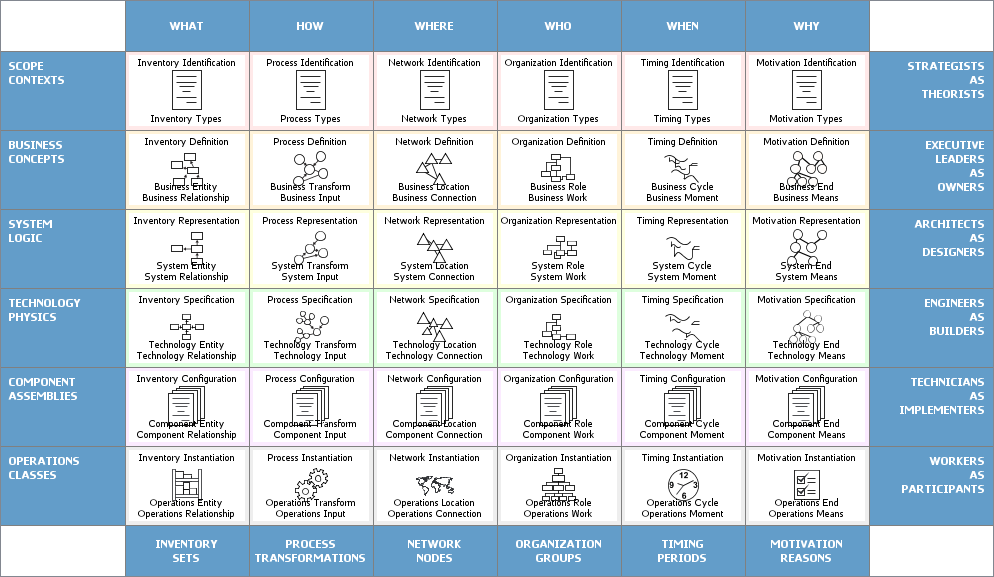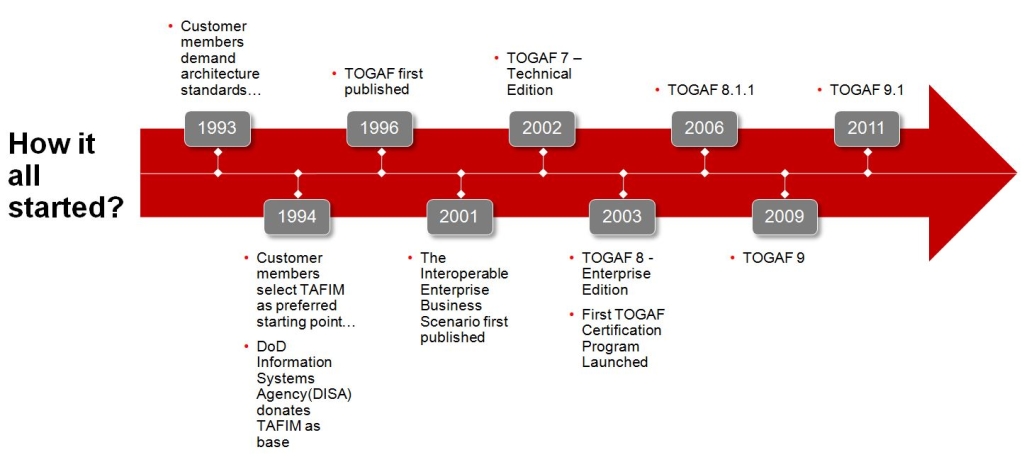Home » Archives for October 2024 » Page 5
Introduction In the domain of Enterprise Architecture (EA), TOGAF (The Open Group Architecture Framework) is one of the most widely recognized frameworks. A critical component of TOGAF is the Architecture Development Method (ADM). While these terms are often used interchangeably, they refer to different aspects of enterprise architecture. This article clarifies the distinction between TOGAF and ADM, explaining their respective roles, features, and how they interrelate. What is TOGAF? TOGAF is a comprehensive framework for developing, managing, and governing enterprise architecture. It provides a structured approach to aligning IT and business strategies, enabling…
continue reading →
Introduction In the realm of Enterprise Architecture (EA), frameworks serve as essential tools for organizations to structure, manage, and align their IT strategies with business objectives. Two of the most prominent frameworks are TOGAF (The Open Group Architecture Framework) and the Zachman Framework. Each framework offers unique methodologies and perspectives on architecture, making them valuable in different contexts. This article provides a comparative analysis of TOGAF and Zachman, highlighting their strengths, weaknesses, and ideal applications. Overview of TOGAF TOGAF is a comprehensive EA framework developed by The Open Group, designed to facilitate the…
continue reading →
-
Posted on October 4, 2024
-
/Under TOGAF
Introduction The Open Group Architecture Framework (TOGAF) has become a cornerstone of Enterprise Architecture (EA) practice since its inception. This article explores the history of TOGAF, its evolution, and its impact on the field of architecture within organizations. Origins of TOGAF TOGAF's roots can be traced back to the early 1990s when it was developed by The Open Group, a global consortium focused on advancing technology standards. The original version, known as the Technical Architecture Framework for Information Management (TAFIM), was introduced in 1995. TAFIM aimed to provide a structured approach to managing…
continue reading →
Introduction to Enterprise Architecture (EA) Enterprise Architecture (EA) is a strategic framework that defines the structure and operation of an organization. It provides a blueprint for aligning business strategy with technology, ensuring that the organization's IT infrastructure supports its goals and objectives. By establishing a clear framework, EA facilitates better decision-making, improved communication, and enhanced agility in responding to changes in the business environment. Key Goals of EA Alignment: Ensure that IT investments align with business objectives. Standardization: Promote consistency and reduce redundancy across the organization. Agility: Enable quick adaptation to changing business…
continue reading →
Enterprise Architecture (EA) is a crucial tool for organizations that want to achieve their strategic vision and deliver tangible benefits. By providing a comprehensive roadmap, EA enables enterprise architects to bridge the gap between business and IT, ensuring that technology supports and enables the broader organizational goals. Enterprise Architecture (EA) is a crucial discipline that provides a roadmap for an organization's vision, enabling enterprise architects to align business and IT strategies and deliver EA value and benefits. The Open Group Architecture Framework (TOGAF) is a widely adopted EA methodology that offers a proven…
continue reading →
Enterprise Architecture (EA) plays a crucial role in aligning business strategies with IT initiatives, serving as a roadmap for organizations to realize their vision. Among the various frameworks available for EA, The Open Group Architecture Framework (TOGAF) stands out for its structured approach and comprehensive methodology. This article explores how TOGAF facilitates the creation of an EA roadmap that aligns with organizational goals, ultimately delivering value and benefits to enterprises. Understanding the Role of EA EA provides a holistic view of an organization’s structure, processes, information, and technology. It helps identify gaps and…
continue reading →
-
Posted on October 3, 2024
-
/Under TOGAF
The Open Group Architecture Framework (TOGAF) offers a robust structure for designing, planning, implementing, and governing enterprise architecture. While it serves as a valuable resource, not every professional in an organization engages with TOGAF. Instead, specific roles are more likely to utilize the framework, each with unique responsibilities that contribute to successful enterprise architecture initiatives. 1. Enterprise Architects (EAs) Enterprise Architects are the primary users of TOGAF. These professionals are tasked with developing and maintaining the enterprise architecture practices within an organization. Depending on the context, EAs may be internal staff or external…
continue reading →




